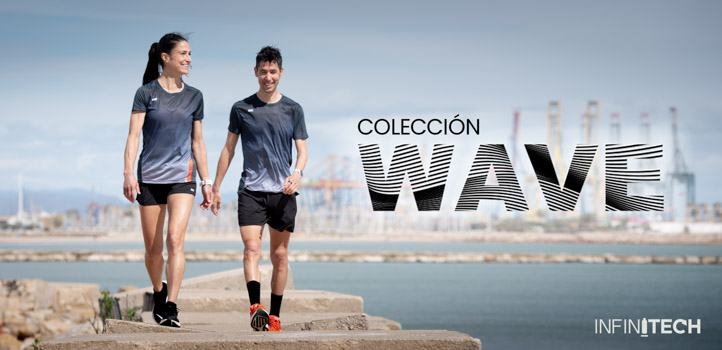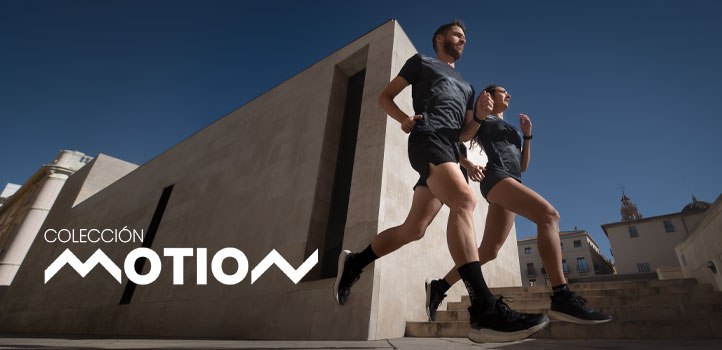Subscribe to our newsletter to find out about all the news and promotions, and automatically receive a welcome discount coupon in your email.

Tibial periostitis, a fearsome bone injury
by David Valenzuela Diaz
In this article we are going to discuss the tibial periostitis, an injury that any runner should fear because it is causing frequent pain in the tibia, the bone we commonly know as the shin. It is a lsion or pathology typical of runners, mainly for long-distance runners.
Tibial splints is a disabling bone injury, painful and does not heal quickly. Fully recovering from tibial periostitis may require, at a minimum, 50 days without running. It is not surprising, therefore, that anyone who has ever suffered tibial periostitis categorically states that it is a fearsome injury.

Overtraining, one of the common causes of tibial periostitis
In October comes a very important sporting event for elite athletes but also for thousands of popular runners: the Valencia Half Marathon.
A half marathon, with its just over 21 kilometers, is a distance that already requires specific preparation and that should not be tackled without adequate training. One fact is enough to clearly understand why this is a demanding test: the 21 kilometers and 97 meters of a half marathon involve an average of 42.000 impacts for any runner.

Many runners take part in the Valencia Half Marathon as part of training for the Valencia Marathon, which usually takes place 5 to 6 weeks later.
One of the big mistakes that are made on the way to preparing for a marathon is overtraining or overtraining. And one of the risks of overtraining is suffering from tibial periostitis, a fairly common injury among popular long-distance runners who make the mistake of doing training at high and inappropriate intensities and volumes without having the appropriate muscles for it.
Once again we have to remember the importance of strength work to have the necessary strength and stabilization in the ankles, legs, hips and core muscles to ensure that the legs are prepared to withstand the repetitive stresses and impacts of running.

What is shin splints?
By definition, tibial periostitis (known in medical terms as 'syndrome medial stress of the tibia') is a inflammation of the periosteum, that is, the membrane that covers the tibia on the external surface and unites it with the gastrocnemius, anterior and posterior tibial bones, and peroneal muscles.
The bones have a spongy structure that is designed with trabeculae, whose function is to cushion and redistribute the loads of the impact against the ground, generating a cushioning and force absorption system that will improve biomechanics and shock absorption between bones when the action of running is performed.
Tibial periostitis is caused by inflammation of the membrane that covers the tibia bone, the periosteum. When there is inflammation of the periosteum, poor absorption of loads occurs and microscopic lesion at bone level which can become a fissure or stress fracture. That is, with each impact the bone is injured with the importance it has on a biomechanical and functional level since it is the structure where it has to support all the weight of walking. And also in the structure where all the biomechanical and structural parts of the human body will be joined.

Bone is a living structure and a highly vascularized structure that with each impact that injures your skin will activate metabolic situations that will generate new bone, what we call in the world of sports bone remodeling, which under normal conditions improves and makes stronger the bone but in pathological and inflammatory conditions they damage it.
Tibial periostitis is an injury that begins mildly, with pain in the shinbone(s) when you finish running; Its evolution, if the impact and cushioning are not corrected, causes the pain to become increasingly frequent and bothersome during training and also after training. Tibial periostitis evolves with inflammation and very acute pain on the tibia that becomes so disabling that there are athletes who cannot even walk.
Factors that can influence the appearance of tibial periostitis
Normally, tibial periostitis is indicative of a structural biomechanical problem. It can be the consequence of a short leg, a problem caused during growth or during sports adaptation due to intrinsic factors such as muscle contractures or shortening of muscle chains, which generates what is known in physiotherapy as a short leg. There are also factors such as excessive bone growth in an asymmetrical manner; For example, a person with a longer femur than the other will find that, when absorbing impacts, the short leg assumes more load and this generates pain in the tibial area.
The main factors that can influence the athlete to suffer a loss of cushioning and that this generates tibial periostitis are:
- Athlete above healthy weight or overweight.
- Athlete who suffers from foot disorders, whether valgus or varus, that directly affect the reception of body weight during impact.
- Athlete with a structural biomechanical problem due to having a shorter leg.
- Athlete with poor running technique.
In relation to the 4 previous points, we will now see keys to improve the impact and achieve the necessary re-education so that the tibias can support more load.
- Athlete above healthy weight or with overweight.
- Every athlete must be at their optimal weight and additionally work on strength exercises that improve movement patterns and help the athlete have the strength to endure the competition.
- Athlete suffering from foot disorders whether they are valgus or varus, which directly affect the reception of body weight during impact.
- Every athlete should have a trusted physiotherapist and podiatrist who help improve the intrinsic musculature of the foot and generate a biomechanical study of running and the foot in order to improve impact cushioning through intrinsic work on the foot muscles.
- Athlete with a structural biomechanical problem due to having a shorter leg.
- Generate a biomechanical and radiological study to ensure that the athlete does not have a structural anomaly that quantitatively and qualitatively conditions a real short leg. If you have a real short leg, we will need a podiatrist to generate a template that corrects dysmetria.
- Sportsman with a bad career technique.
- The athlete needs good running technique so that the cushioning process in each impact of the stride during the competition has good load absorption and does not generate inflammation of the tibia that could end in a bone fracture.
Tips to prevent tibial periostitis
My experience as a physiotherapist allows me to indicate the following tips to prevent tibial periostitis.
- Go to the physiotherapist to obtain a biomechanical assessment of the leg and foot in order to find out if there is a structural predisposition to suffer from tibial periostitis.
- Hydrotherapy. Physical work in the water to reduce loads.
- I work with bicycle and elliptical to remove impact.
- Work strength. Work in the gym must be taken very seriously to improve strength patterns and ensure that the muscles are prepared for impacts.
- Improve with a physiotherapist the term muscle in relation to gait patterns.
- Having hip and knee mobility that improve the possibility of ankle impact.
- Remove muscle tension from the tibialis anterior and tibialis posterior which are muscles that directly influence the pressure of the tibia.

Tibial periostitis is an injury that is too often not given due importance with the appearance of the first symptoms. The problem with tibial periostitis is that when it is given importance because the pain is already intense or begins to be disabling, it is when the injury has already entered a phase in which it prevents continuing running because each new impact will worsen.


Text to 42K of :
David Valenzuela Diaz
Physiotherapist at BOX55
David Valenzuela Díaz has a degree in physiotherapy from the Cardenal Herrera CEU University and a Master's degree in assessment, physiotherapy and sports rehabilitation from the University of Valencia. He is CEO of BOX55 Fisioterapia y Academia SL, of BOX55 Academy and of Valobando SL Functional Biomechanical Analysis.
David Valenzuela, CEO of BOX55
Other entries by David Valenzuela Díaz
42K · All rights reserved


Comments
Post a first comment for this entry!